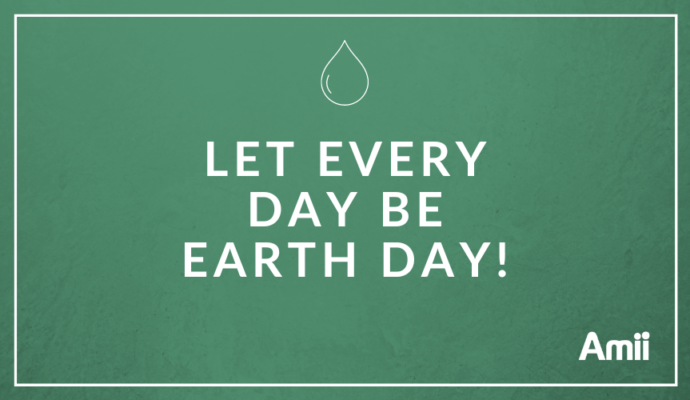How to install a water softener by yourself?
Installing a whole-house water softener by yourself is not a difficult task. If you are a DIY enthusiast and you take care of all home improvements you can install it without spending money on a plumber. So, what should you start with?
Many whole-house water softeners are designed to facilitate DIY installation. Take cabinet water softener for instance. They accommodate all the components in one casing with just a few outlets to keep the installation short and simple.
Before you cut to the chase, choose and prepare the right spot for the softener at your house.
Where should I place the water softener?
The answer to that question is simple – at the point where the water supply pipe enters your house. Usually, it is located in the basement or the utility room. Mind, that the water softener must be kept indoors, not outside, as it won’t operate when the temperature drops below 0⁰.
After you have located the water supply pipe, make sure the floor is solid and level. Hard and flat flooring is necessary for the proper operation of the softener.
What if it’s not possible to include a dedicated space for the softener in the design plans of the house? A shortage of space will eliminate some device models in advance, such as dual-tank water softeners. As an option, you can choose among cabinet softeners, which are compact, efficient and will fit limited space in your house.
How to connect the water softener to the main water pipe?
Any water softener should be connected to the main pipe right after the water meter, but ahead of all water-operating appliances, including the water heater. This way all the appliances will be fed with softened water, which won’t form limescale when heated.
Locate the raw water input and soft water output in the softener, then align the softener accordingly with the water flow in the mains. Make sure that the water softener can be also easily plugged into the power socket and has free access to the drain.
The control valve requires electricity for work and to enable device steering. The drain collects the brine after the resin regeneration process. Mount an air gap between the brine hose and the drain to prevent backflush of the brine from the drain and resin bed contamination.
Before you connect the water softener to the supply pipe, make a room for a pre-filter (a sediment filter). It will catch all the solid particles from the water such as sand, rust or silt, which can damage the control valve and the softening resin.
Pre-filter and water softener installation is fuss-free and will require some tools and pipe-cutting. If you don’t want to invest in a set of tools or simply don’t have time to do the job properly, call a plumber to do it for you. You can also contact one of many water softener dealers, as they usually offer softener installation on delivery.
However, if home DIYs are your cup of tea, let’s roll up the sleeves and get to work.
Typical water softener installation
There are two ways in which you can connect the water softener to the mains.
Quick and easy fitting
Turn off the water supply, the water heater, as well as drain all the lines for remaining water. Mount the pre-filter on the water entry, downstream of the water meter. Cut into the main supply line and connect raw water inlet that will supply untreated water to the softener, and the soft water outlet, that will distribute treated water around the house.
Use flex connectors to plug the device into the water pipes. Mind the direction of the water flow! Next, connect the softener’s drain hose to the drain, through an air gap. This will prevent the aforementioned back siphoning of wastewater.
Fitting with a bypass
Adding an extra bypass to the water supply pipe can save you time and trouble in the future. The bypass will be useful during maintenance of the water softener, and also when the softener breaks down and the repair is scheduled in a few days. In such cases, the bypass will enable the raw water supply for the entire house during the softener’s downtime.
To install a bypass, just solder in a detour pipe with an extra valve. It should open ahead of the pre-filter and close behind the water softener. Both the sediment filter and the water softener should be installed in the same way as described above.
What plumbing is needed for a water softener?
Frankly speaking, the plumbing material does not make a big difference in the case of a water softener. You connect it in the same manner, no matter if your pipes are made of galvanized steel, copper or PVC. The only thing you need to mind regardless of the piping type is that all the connections must be soldered unbent.
You may also wonder if it is ok to use a water softener when you have copper plumbing at your house. Yes, it is. For details, please check our article on myths and realities connected with water softeners.
1…2…1…2… this is just a water softener test
As you have successfully installed a water softener in your basement, the next thing is to check the installation for leaks. We recommend performing a hydraulic test at this point. Just turn on the water supply and observe all joints and connections. If no leaks occur, the installation has been done properly. Good job!
When you are done with the plumbing, it is time to plug in and programme the control valve. It will require some data input, such as the level of water hardness and resin regeneration cycles. After the set-up, fill in the brine tank with salt and run the softener.
We highly advise conducting the full regeneration cycle at this point. It consists of five steps:
- In-serve mode
The water softener is in the water treatment mode, in which the raw water flows through the resin, gets treated and then is distributed through water lines around the house.
- Backwash mode
The backflow mode prepares the resin for the regeneration process. The raw water flows through the resin but then is discarded straight to the drain. Check the drain hose and the air gap connection at this stage.
- Brine draw and slow rinse
Now, the resin regeneration process is on. Check the brine level in the brine tank. If it lowers, this means the brine is drawn properly to the mineral tank for the resin regeneration. Next, the resin is slowly washed with brine. Finally, the brine is discarded into the drain.
- Brine refill
The raw water is replenished in the brine tank. Check if there is enough salt in the tank to prepare the solution for the next regeneration cycle. Also, control the water level in the brine tank – if it goes up, the refill stage is completed.
- Fast rinse
During this stage, the resin is washed vigorously with clean water to get rid of brine leftovers. Fast rinse also rearranges the resin in the mineral tank for efficient water treatment. When the rinse is done, the water should be discarded into the drain. Check, if it is.
After all five stages are completed, the softener goes back to the in-serve mode.
After some time you will know if the soft water meets the expectation of your family. If the water will turn out to be too soft for your liking, adjust the softness level with the mixer. A mixer is a small screw in the control valve. Check for its location in the manual. The mixer enables adding some raw water to the softened water. This way you can set the desired water softness.
The manual on how to install the water softener comes with the device. Although the installation is not complicated, you should schedule one afternoon to deal with it. Just tell your family in advance that there will be no water available for the time being.

